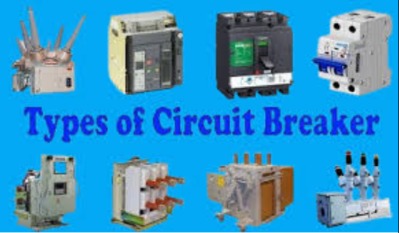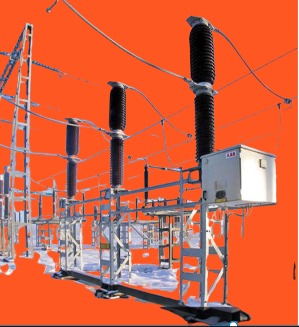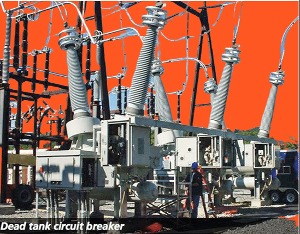
Though we have different types of circuit breakers, they all protect electrical devices and equipment.
Circuit breakers protect electrical equipment from short circuits, over-currents, fire outbreaks, electric shocks and ground faults.
It is a must-have device for every homeowner as required by the National Electrical Code.
Circuit breakers come in varying sizes and models, ranging from the low voltage interrupters used in homes to high voltage breakers used in substations. But they do the same work, which is over-current protection.
Types of electrical circuit breakers.
There are three main types of breakers, they include:
- Low-voltage circuit breakers
- Medium voltage
- High voltage breakers.
Low voltage breaker types
These are the breakers used in our homes, industries, and business areas. They are rated for use at a low voltage from 0 to 1000 V.
The low cbs fall into three categories:
- Standard breakers
- Ground fault circuit breakers (GFCI)
- Arc fault circuit interrupters (AFCIs)
1. Standard circuit breakers
These are the main breakers used in homes and industries to protect branch circuits and appliances from electrical surge. It can be a single or double-pole breaker.
Single-pole circuit breakers are more common, and they protect only one circuit. It also supplies 120V and handles between 12 and 20 amps.
The double-pole circuit breaker has two single poles joined by a trip mechanism. It protects two wires, supplies 120/240V, and also handles 15 to 200 amps. It is used on large appliances such as a water heater.
2. Ground fault circuit breaker
GFCI circuit breakers protect human beings from electric shock. It has a sensor that detects ground faults or leakage of currents.
Each time there is current leakage along the circuit, the outlet trips to prevent danger.
Sometimes, your GFCI will keep on tripping or won’t reset after tripping,these are signs of ground faults.
GFCI breakers are installed in kitchens, bathrooms or wet areas where ground faults are common.
3. Arc fault circuit interrupters (AFCI).
This is a circuit protection device used to detect and interrupt arc faults that may occur in electrical circuits.
It is used to protect against electrical fires caused by arcing.
Examples of low voltage circuit breakers
1. Miniature circuit breaker (MCB)
This is a low-voltage circuit breaker used to protect circuits in homes and small commercial buildings.
This breaker handles up to 125 Amp, but the trip characteristics is not adjustable.
2. Molded case circuit breaker (MCCB)
MCCB is a larger and more robust breaker used to protect circuits in larger commercial and industrial buildings.
MCCB can handle up to 1600 Amp currents, making it a better option for industries that need higher power. And unlike MCB, you can adjust their own trip load.
Medium voltage circuit breakers
These breakers handle voltages between 1 and 72 kV (1000 – 72000 V), and you can install them indoors, outdoors, and in substations.
Classification of medium voltage circuit breakers
Medium voltage breakers are classified by the medium they use to extinguish the arc. They include.
Air circuit breakers
These breakers use air to extinguish the arc. It can house up to 6,300 Amperage currents and higher for generator circuit breakers. They have adjustable tripping features, configurable trip thresholds, and delays.
They are controlled electronically, except for the microprocessor models, which are controlled by electronic trip units.
Vacuum circuit breakers:
They interrupt light by extinguishing the arc in a vacuum called a bottle. It also houses up to 6,300 amp of current and higher for generator circuit breakers.
They have a longer life span and cause fewer environmental hazards than sulfur hexafluoride circuit breakers.
Sulfur hexafluoride circuit breakers (sf6)
This breaker extinguishes the arc in a sulfur hexafluoride-filled chamber.
High-voltage circuit breakers (72.5 KV & above).
This is the type of circuit protector used in substations to protect electrical transmission networks from overload and earth faults.
They use solenoids, controlled by current sensing protective relays from the current transformers.
High-voltage circuit breakers can either be live or dead tanks.
In a live tank, the interrupter chamber (tank) is raised above the ground by an insulator, at a high potential. While in dead tanks, it holds the chamber on the earth’s metal.

Live tank circuit breaker
Dead tank circuit breaker

Classification of high-voltage circuit breakers.
Their classification is based on the medium they used to extinguish the arc, which includes:
- Air or gas
- Vacuum
- Oil
Air and gas extinguishers include the
1. Air-blast circuit breakers
The air blast came into existence in the 1930s and became a common extinguisher for high voltage and high voltage applications.
It extinguishes the arc via compressed air stored in a tank. The tank produces high-velocity air when released. It cools and opens the arc.
2. Sulfur hexafluoride circuit breakers (SF6):
SF6 is an inert gas with insulating and arc extinguishing properties.
They extinguish the arc by blowing a high-pressure gas on it. It cools and also separates the arc.
3. Vacuum extinguishers
In vacuum interrupters, they house the contacts in a high vacuum that also acts as an extinguisher.
Vacuum extinguishers are more efficient, cheaper, and durable.
4. Oil circuit breakers
- Bulk oil interrupter: In bulk oil, the current interruption occurs inside the oil tank. The oil cools and separates the arc from each other, resulting in a blackout.
- Minimum oil: they use this in transmission and in substations, it requires less oil to function
How to identify the right circuit breaker for your electrical system
If you want to replace your circuit breaker or install a new one, identifying the right one can be hard mostly for non-electricians. Below are the things to watch out for.
- Overall voltage rating: This is the maximum voltage it can handle before tripping.
- Current rating: It shows the value of currents the breaker can carry.
- Trip curve: This shows the graphical representation of the expected behavior of a circuit protection device.
Related articles
- How to replace a circuit a bad circuit breaker
- How to tell if a circuit breaker is bad
- What Wire Size Do I Need for my 60 Amp Breaker?
- What is a Motor Protection Circuit Breaker?
- Eaton Cutler Hammer Breakers
- Overview of Square D BDL36100 Powerpact Molded Case Circuit Breaker
- What is a shunt trip breaker